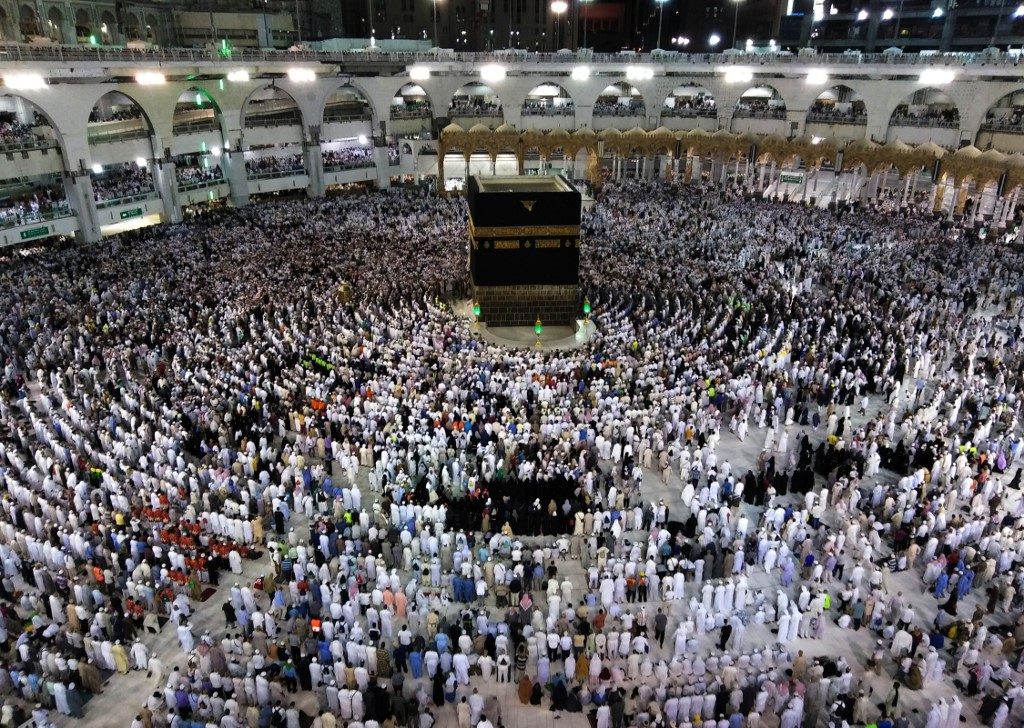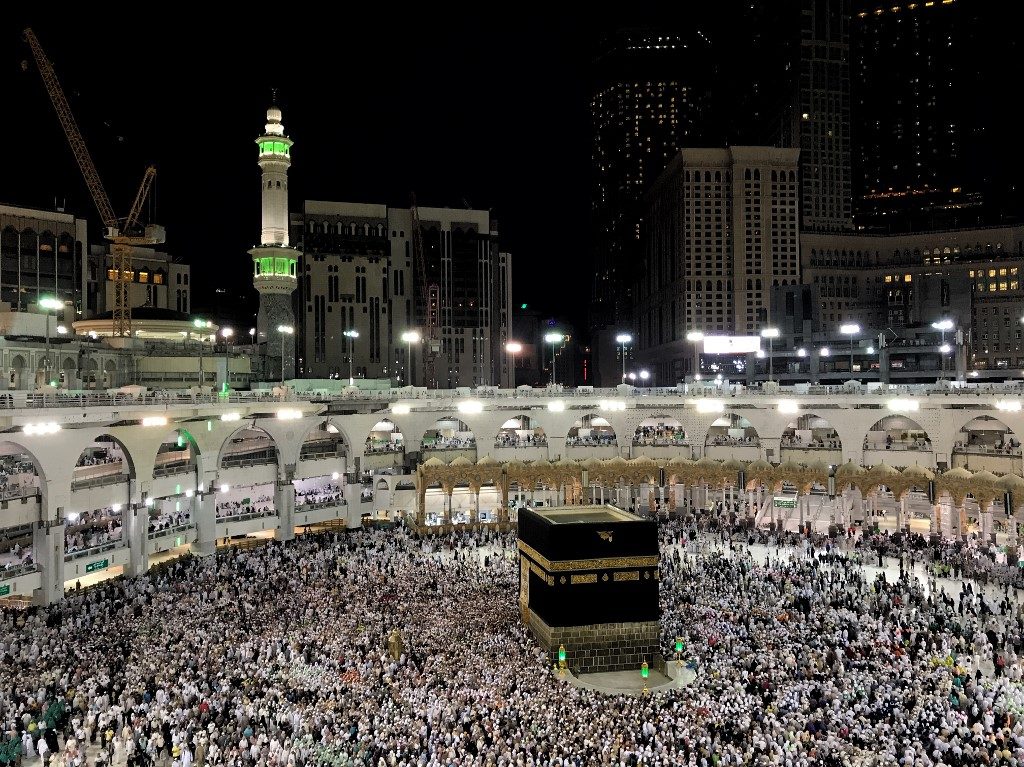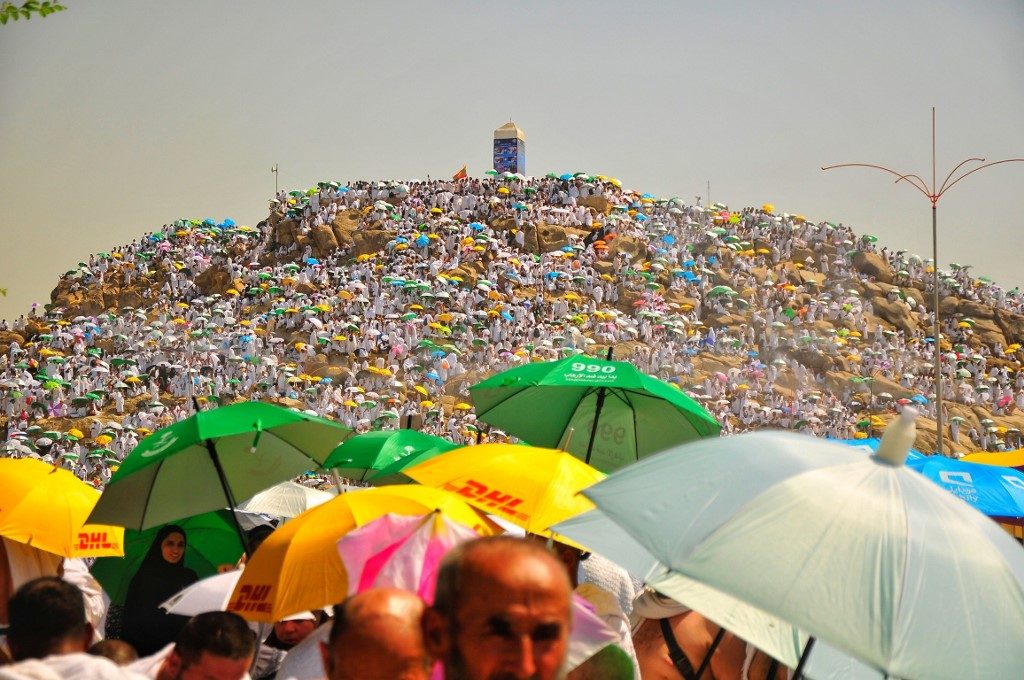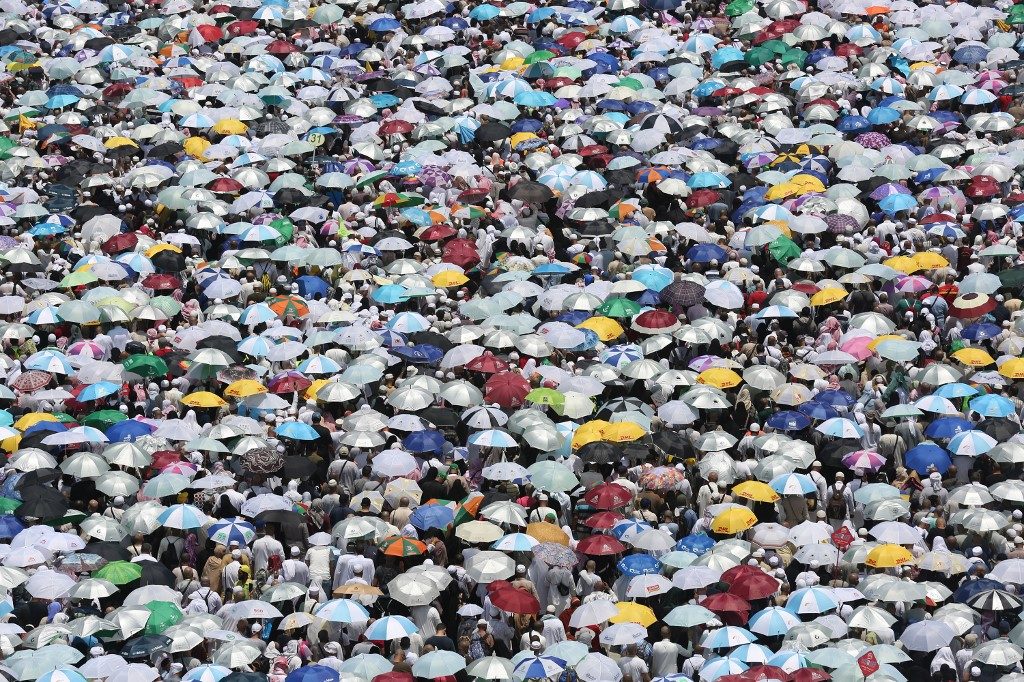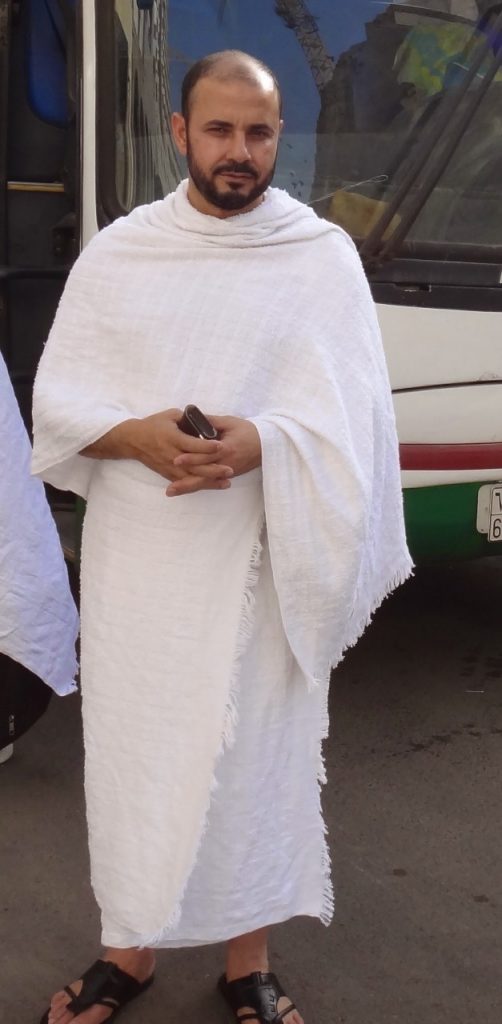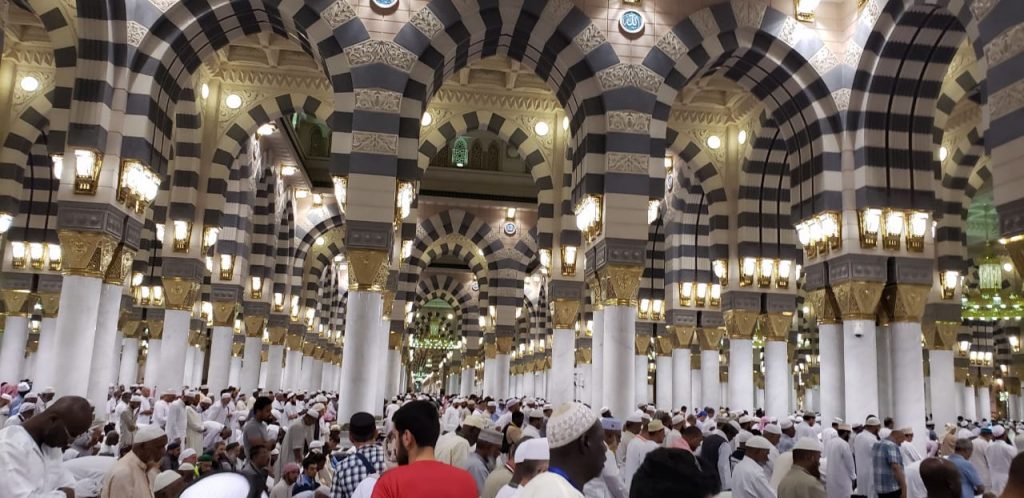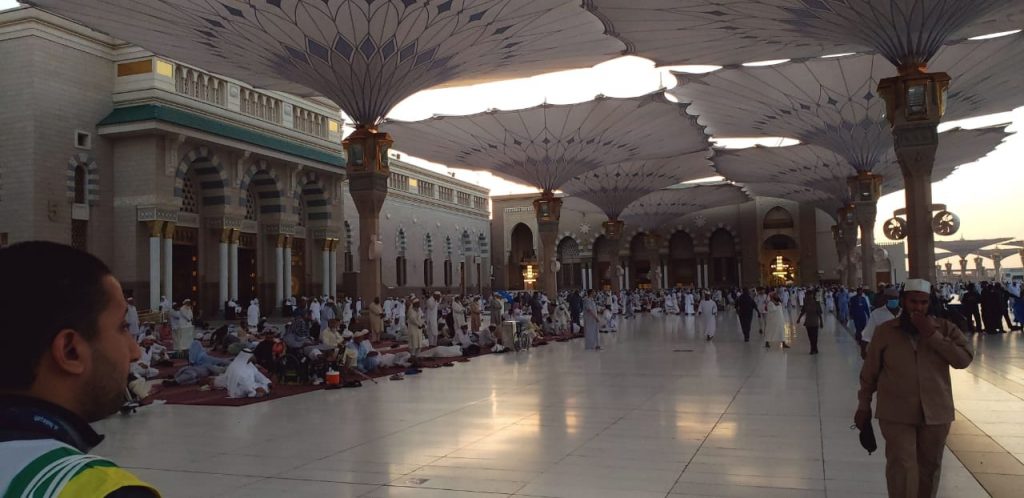São Paulo – Born in São Paulo, Luiz Henrique Souza converted to Islam six years ago. A son of Christians from the Northeast Region of Brazil, he started practicing the religion in 2013, while he was studying history at São Paulo State University (UNESP) in Franca. “I started studying it as a way to reaffirm who I was and what I believed in,” he told ANBA. “And also because of Malcolm X, who was a Muslim; I also started being around Muslims that lived in the periphery of Embu das Artes.” The 26-year-old teacher, historian and artist will go on Hajj, the pilgrimage to Mecca, this year. Malcolm X was one of the most important American activists against racism in the 1950s and 1960s.

Souza says that, in his conversion process, he gradually started a series of practices while studying the Quran in mosques in Santo Amaro and Embu das Artes. He says that, in order to convert to Islam, it’s enough to utter the words: “There is no true deity but God, and Muhammad is the Messenger of God,” he said. “But you must believe it,” he stressed. To apply for a visa to Mecca, Saudi Arabia, Souza asked a sheikh, a Muslim religious authority, for a certificate of Islam conversion. Only Muslims can go into Mecca.
Souza discovered the social work performed by the Federation of Muslim Associations of Brazil (FAMBRAS), which offers trips to Hajj, around three years ago, registered, got into the waiting list, and was selected to go this year. “I started preparing for the ritual and understood the meaning of the pilgrimage, I got a clear idea of what it is; I believe it’s a very intense, unique, personal experience.” For Souza, this trip is the only one that matters in the life of a Muslim. “It’s the world’s greatest pilgrimage and being there is like the material recalling of monotheism, it’s like going back to the religion’s origin, and it’s also a manifestation of the strength and diversity of Islam,” he declared. “I’m going with a religious perspective, but also a historical one because of my education. Everyone that goes there invited by God. Many people make plans and can’t go. There’s a calling,” he added.
He says that, both for academic and religious reasons, he tries to address Islam history and Middle East issues in a fact-based approach in his history classes at Colégio 24 de Março. “I believe that, this way, I end up expanding my students’ worldviews and removing prejudices,” he said.
He says that the school he works at have a good relationship with the Islamic community in the region, since it’s next to the Mesquista Santo Amaro. For him, however, his mosque, the Mesquita Sumayyah Bint Khayyat in Embu das Artes is special. “Because it was founded by Brazilians converts to Islam in a very poor region, and that’s where I could get along well. It’s a personal joy going on Hajj, but it’s also a joy for my community,” he said.

Female experience
The 42-year-old administrative assistant Carla Sanches Taky Eldin converted 19 years ago and went on the pilgrimage to Mecca in 2012 with her husband. She tells a little about her experience as a Muslim woman on Hajj. She says the pilgrimage is made together and men and women are only separated in hotel rooms and inside the mosques, as it’s the Islamic tradition. “I didn’t feel any separation. Actually, I felt a protection and a special treatment towards women,” she told ANBA. Most of the women use the “abaya,” a long black vest, or white prayer clothes, as well as the hijab, Eldin said. “On the Day of the Sacrifice, the men shave their heads, while the women only trim their hair a little bit,” another difference in the women’s pilgrimage.
“It was an unbelievable experience! It’s a unique emotion being so close to God. Many stretches that are pure emotion. Mecca is definitely a spectacle of grandeur: Kaaba, the first house on Earth, going around it seven times takes between two to three hours, with millions of people, all of them in a perfect circle. I loved everything that my eyes saw. It’s the true faith in one place, the one and only Islam,” she said.
Muslim Arab
The heat, the calm, the security, the millions of people and the infrastructure were factors that caught the Egyptian-born Brazilian Amro Awad’s attention during his first pilgrimage last year. Awad is 28 and has been in Brazil for seven years and is responsible for consulate issues at the United Arab Emirates’ Consulate in São Paulo. “There were over 2 million people visiting the holy places under a 118 to 125 degrees, but you get used to the heat and almost everywhere there is an air-conditioner, in mosques, hotels, bathrooms, and there are huge sunshades and water vapor outside to fresh up,” he said. Awad was able to go on Hajj thanks to the assistance of a Dubai charity linked to FAMBRAS.

Awad said that, during the pilgrimage, they do everything as happened to the prophet Abraham. He went around Kaaba seven times but couldn’t reach the black stone in the middle, which is almost impossible to reach amid so many people. “We’re all the same there, wearing the ‘ihram’, which is like a big, white towel divided in two parts, one covering the legs, and another the torso,” he explained. He walked seven times between the two mountains. He stood in the Mina camp for some hours before going back to the hotel. “You aren’t obligated to spend the night there, but you must keep watch during the night, and each person decides for how long they want to stay,” he said. He performed the stoning of the devil and, on the Day of the Sacrifice, he donated a lamb, shaved his head and took the white cloth off. “You have to do it in this order,” he explained. “It was amazing to experience that, to live what they lived. You can’t imagine how it feels being in that sacred place. I went where Ismael stepped on Kaaba, there I could reach,” he told.
Awad said that, when arriving in Saudi Arabia, a Ministry of Hajj and Umrah inspector retains the pilgrimages’ passports and only return them at the end of the trip. “For organization and security purposes, I guess, to avoid conflicts,” he said. Umrah is a lesser pilgrimage, performed at another time of the year.
Awad was impressed with the country’s infrastructure to receive the pilgrims. “At the walls of the stoning, they made a USD 5 billion project to build three towers in order to increase the space and make it more organized and avoid accidents. He also mentioned the high-speed railway that takes the pilgrims from Mecca to Medina, a city that is not part of the Hajj but is visited by many Muslims after the pilgrimage, since that’s where the Prophet’s Mosque is situated. The train started operating last October and rides at 300 km/h. The construction costed approximately USD 1.8 billion.
Zamzam water
Carla Eldin and Amro Awad drank the holy water from the Zamzam wells, which supplies Mecca and Medina through fountains for the pilgrims. It’s possible to take home up to five liters of the water on the plane. “The airport has a store that sells the water for pilgrims to take home,” Awad said.
“The holy water answers the prayers. What you ask for does happen, and it has healing properties for skin diseases,” Awad said. He didn’t want to tell what he asked for, but he said that “people usually ask that God guide us until the end of the line and that we don’t steer away from the right path, and our heart and physical body are protected.”
Medina
Medina was mentioned by one of the interviewees as a place that, despite not being a part of Hajj, has a special energy. “I was all tears while visiting the Prophet’s Mosque in Medina. I was so grateful God gave me the chance to be there; it’s a white and gold mosque, it’s a completely different feeling to pray there among thousands of people from several cultures and countries, all together in one mission!” Eldin said.
Despite the 125 degrees, even hotter than Mecca, where it was 118-122 degrees during the day, Awad reported having felt “a peace that doesn’t exist anywhere else in the world.”
The kindness was another factor that impressed Awad in his religious trip. “People are so kind in Mecca and Medina. Many strangers on the street offering everybody water and dates to help pilgrims. The generosity of those living there caught my attention. They even offer you rides. They are all volunteers.”
What is the Hajj
The fifth sacred pillar of Islam is the Hajj, a pilgrimage to Mecca and Mina between the 8th and 13th day of the final month in the Islamic calendar, the Dhu al-Hijja. The pilgrimage must be taken at least once in a lifetime by Muslims who are financially and physically able to do it.
ANBA spoke with Egypt’s sheikh Khaled Taky Eldin to find out more about the processes and history involved in the Hajj. Khaled is secretary-general of the Superior Council for Islamic Theologists and Affairs in Brazil. The husband of Carla Eldin, he’s served stints at mosques in Brazil and Latin America.
The first pillar of Islam is faith in one God only; the second is prayer; the third is Ramadan, or fast from sunup to sundown during the 9th month of the Islamic calendar; the fourth is charity; and the fifth is the Hajj.
Mecca, according to Khaled, is the holy house of God, and the first house of God ever built on Earth. The prophet Abraham was sent to Mecca with his first wife Hager – or Hagar – and his infant son Ishmael. Abraham left his wife and kid in Mecca with a little food and water. When the water ran out, Hager went out for more between the mountains of Al Safa and Al Marwa – the second part of the pilgrimage – and found the well of Zamzam, which held holy water, next to the Kaaba.
(story continues after photo gallery)
Khaled explained that the trip to perform the fifth pillar of Islam is really an act of asking forgiveness and of spiritual cleansing, a time for meeting other brothers, where everyone’s an equal, clad in white clothes with no pockets or seams, and wearing sandals.
The first step along the pilgrimage will last two or three days in Mecca, for the visit to the Holy Mosque and the seven circles around the Black Stone of the Kaaba – an homage to the first holy house built to worship a single God. The pilgrim will then drink water from Zamzam and make the prayer or plea.
Next comes the march between the Al Safa and Al Marwa mountains, retracing Hager’s water-seeking path. This is also done seven times, covering some 4 km. “God sent the water to Hager, a strong, decent woman who trusted in God, and we remember her efforts,” the sheikh explained.
On the eighth day of the Dhu al-Hijja, two days prior to the Festival of the Sacrifice, pilgrims will spend the night camping out in Mina, a city near Mecca. “Afterwards they’ll go to Mount Arafat, where they’ll spend a whole day so God will forgive their sins and bless them,” he explained.
Pilgrims will then go through Muzdalifah – where prophet Muhammad stopped over – on their way back to Mina. They will pick up 21 stones and cast them upon three walls – one small, one medium and one large – to complete the stoning ritual. This symbolic gesture harks back to prophet Abraham’s dream where God instructed him to sacrifice his then-15-year-old son Ishmael. “En route to the sacrifice, Satan appears before Ishmael, then before his mother, then before the prophet, and each of them renounces the devil by casting seven stones upon him each,” said Khaled.
“After that ordeal, God sends a huge lamb – via Archangel Gabriel – to be sacrificed in lieu of Ishmael. Here, their faith is recompensed,” the sheikh explained. That’s why pilgrims will sacrifice a lamb on the Day of Sacrifice. Currently, specialized establishments will perform the sacrifice and donate the meat to neighboring countries.
At this point, pilgrims will cut their hair, take off their white garments and return to Mecca for seven more laps around the Kaaba and another march between Al Safa and Al Marwa. Then they will return to Mina for a new stoning ritual. This repetition of procedures, according to Khaled, is intended “to show faith and forgiveness. It shows one is on the godly path, against desire and bad thoughts.”
On the eleventh day, pilgrims will return to Mecca to complete the pilgrimage. Most will then take the trip to the Medina, which is considered a holy place, since it’s home to the Mosque of prophet Muhammad.
According to sheikh Khaled, each prayer in Mecca is equivalent to 100,000 prayers, and a prayer in Medina is worth 1,000 prayers. “[Whoever does it] will get plentiful rewards from God,” he said.
The figures
Mecca welcomed nearly 2.4 million pilgrims from over 100 different countries for the Hajj last year. The dates for the biggest pilgrimage in the world vary according to the Islamic lunar calendar. This year, the Hajj will run from August 9 to 14.
There are 1.8 billion Muslims in the world, or about 24% of the total population. By 2060, that number is expected to increase by 70% to 3 billion, as per a 2017 Thomson Reuters report.
In Brazil, according to 2010 IBGE Census numbers, Muslims number in at just over 35,000. These are the latest available official data, but Fambras president Ali Zoghbi estimates that the number is close to a million. About 200 of them will join the Hajj each year – including Brazilians, Arabs and Latin Americans –, according to Al Hidaya Tour & Travel, which specializes in religious tourism and offers packages to Saudi Arabia in Brazil.
How to travel from Brazil
Al Hidaya is owned by husband and wife Sheikh Yasser and Manal Hamed. A former Arabic teacher, Hamed currently dedicates herself to the company. She coordinates women groups’ Hajj trips. The tour operator has been covering the Hajj for 19 years now. In the last 13 years it never missed a year taking people to the holy cities of Islam. A Syrian native in Brazil for 20 years, Hamed speaks Portuguese, Arabic, Spanish and English.
Packages include air travel, visa, medical exam and accommodation in Istanbul on the last night. Hamed said she has 165 confirmed travelers for this year’s pilgrimage, and expects to get to 200.
According to her, a Hajj package from São Paulo goes for USD 6,900, including Turkish Airlines flights with a stopover in Istanbul and landing in the Jeddah Airport. The 90-km shuttle trip from the airport to Mecca is included. Shuttle buses are also available connecting the pilgrimage sites, hotels in Mecca and Medina once the Hajj is over, a night in Istanbul, and two meals a day.
Would-be travelers must apply for a visa, which Hamed said is awarded about two days prior to the trip. the tour operator helps travelers out with all procedures and charges. A medical exam is also required to attest that travelers are in good health.
Al Hidaya takes group of 150-200 people to Mecca each year, some 90 of whom are women. According to Hamed, most of them are 60 or older and travel alone – with authorization from a husband, father or brother – and the younger ones will usually travel with their husband or a brother. Women traveling alone are required to be over 45 years old. Half the travelers are Brazilian, but lots of pilgrims are from Argentina, Chile, Mexico and the Dominican Republic, according to Hamed.
Translated by Guilherme Miranda & Gabriel Pomerancblum



